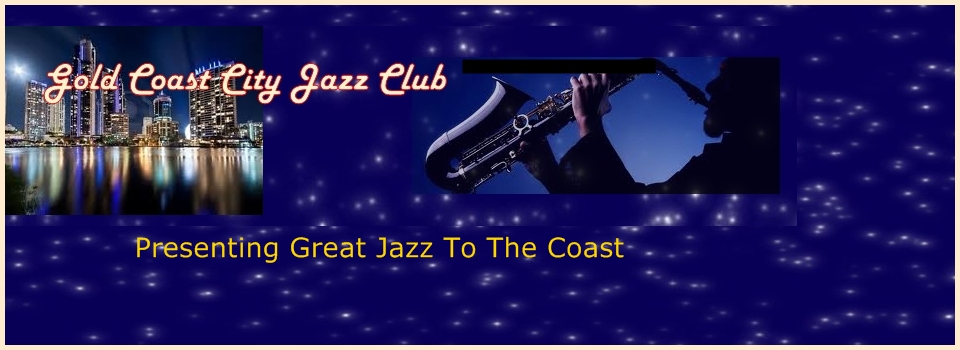Trumpeter, bandleader and composer John Birks “Dizzy” Gillespie was born on October 21, 1917 in Cheraw, South Carolina.
The last of nine children in a poor family, Gillespie originally played trombone, switching to trumpet when he was 12.
He won a scholarship to an agriculture school (the Laurinburg Institute in North Carolina) where he had an opportunity to study music, but he dropped out in 1935 to try to make it as a musician.
Inspired by the playing of Roy Eldridge, Gillespie worked with Frankie Fairfax’s orchestra in Philadelphia, was in Eldridge’s old spot with Teddy Hill’s big band in 1937 (where he made his recording debut), and was a member of the Cab Calloway Orchestra during 1939-41.
While with Calloway, Dizzy was regularly experimenting during his solos which led to some eerie harmonies that Calloway called “Chinese music,” improvising over more complex chords than the rhythm section was playing.
During 1941-42, Gillespie (who met his musical soulmate Charlie Parker in 1940) spent brief periods with many Swing era big bands including those of Ella Fitzgerald, Benny Carter, Charlie Barnet, Fess Williams, Les Hite, Claude Hopkins, Lucky Millinder, and Calvin Jackson, subbing with Duke Ellington for four weeks.
After working out his ideas at late night jam sessions at Monroe’s Uptown House and Minton’s Playhouse, and contributing advanced arrangements to the big bands of Woody Herman, Benny Carter and Jimmy Dorsey, Gillespie and Parker (known as Bird and Diz) introduced their new bebop music as members of the Earl Hines Big Band in 1943 (unfortunately that group did not record) and the Billy Eckstine Orchestra of 1944.
1945 is when Dizzy Gillespie became famous and bebop exploded in the jazz world with Diz & Bird recording such classic bop tunes as “Hot House,” “Salt Peanuts,” “Dizzy Atmosphere,” “’Shaw Nuff” and “Groovin’ High.”
Gillespie led a short-lived big band in 1945 and had more success with his 1946-49 orchestra.
In addition to his very complex solos (he had the ability to play notes that seemed wrong, hold on to them, and somehow make them fit), Gillespie was an important pioneer in Latin or Afro-Cuban jazz, composing “Manteca” and utilizing Chano Pozo on congas with his big band.
After the break-up of his orchestra, the always-colorful trumpeter made some of his most exciting small-group recordings in the 1950s, spreading the gospel of bebop worldwide, and gradually making the transition from revolutionary to beloved elder statesman.
Highlights of his later years included the 1953 Massey Hall concert with Charlie Parker, his globetrotting big band of 1956-57, classic small groups with such sidemen as James Moody, Lalo Schifrin and Kenny Barron, tours with the Giants Of Jazz (a sextet with Sonny Stitt and Thelonious Monk) during 1971-72, and his final big band, the United Nation Orchestra of 1988-92.
This film clip features Dizzy Gillespie during a visit to Cuba in 1982, playing an extended version of “A Night In Tunisia” (his most famous composition) with his quintet and guest trumpeter Arturo Sandoval.
In 1968, Dizzy Gillespie led an all-star big band on a tour of Europe.
At a concert in Copenhagen, he revived an arrangement from his 1946-49 big band (“Ray’s Idea”) and utilized it as a feature for baritonists Cecil Payne and Sahib Shihab.
Cecil Payne (1922-2007) was a member of the earlier Gillespie orchestra and also worked with Tadd Dameron, Illinois Jacquet and Randy Weston while Sahib Shihab (1925-1989) is best remembered for his associations with Thelonious Monk (on alto), the Quincy Jones Orchestra, and the Kenny Clarke/Francy Boland Big Band.
Dizzy Gillespie always loved Afro-Cuban jazz and was one of the early pioneers in the fusion of bop and straight ahead jazz with Cuban rhythms.
During his last period (1989-91), Gillespie led the United Nation Orchestra, an all-star big band that mixed together top jazz artists from several countries with a strong emphasis on Latin America.
“Tanga,” which is considered the first Afro-Cuban composition, was written by Mario Bauza for Machito’s orchestra in the early 1940s.
This version from around 1990 has the United Nation Orchestra performing the early piece with Flora Purim singing the melody and scatting in her own original style.
Purim is followed by a Gillespie solo, a torrid tradeoff by tenor-saxophonist Mario Rivera, altoist Paquito D’ Rivera, and James Moody on tenor, and heated solos from drummer Ignacio Berroa, percussionist Airto Moreira and Giovanni Hidalgo on congas.
While relatively little of the bebop era was filmed, Jivin’ In Bebop was an important exception, essentially a black vaudeville show with the Dizzy Gillespie Orchestra as the house band.
The emcee, Freddie Carter and Gillespie exchange plenty of period one-liners and puns, the team of pianist Dan Burley and organist Johnny Taylor has two features, Dizzy’s big band backs various dance acts on six boppish numbers, and there are vocals by Helen Humes (“Be-Baba-Leba” and “Crazy About A Man”), Kevin Hagood (“I Waited For You”) and Gillespie (“I Beeped When I Should Have Bopped”).
In addition to being seen during the vocal numbers, the Dizzy Gillespie Big Band is showcased on “Salt Peanuts,” “Oop Bop Sh’Bam,” “One Bass Hit” and the always-futuristic “Things To Come.”
The orchestra includes the trumpeter-leader, altoist James Moody (although unfortunately he does not get any solos), altoist Scoops Cary, pianist John Lewis, vibraphonist Milt Jackson, bassist Ray Brown and drummer Joe Harris.
This is a remarkable film taken from the height of the bebop era and featuring one of its most significant groups.

Speak Your Mind